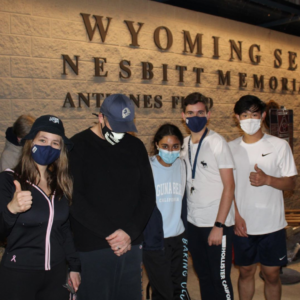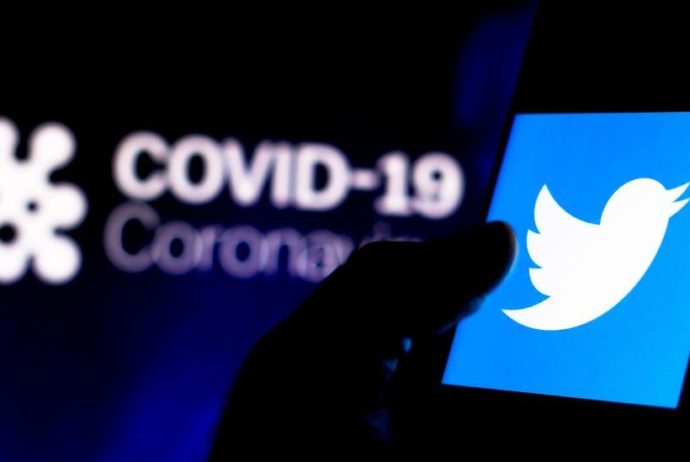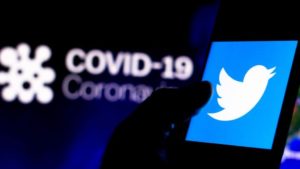Student Life During COVID-19
By Bridget Gabriel ‘21

Harry Shafer ‘00 looks somber after being captured by excited students two minutes prior to the end of the game (Photo courtesy of @/Semstudentlife on Instagram)
Wyoming Seminary’s Upper School began its 177th year without its boarding community that traditionally makes up around 40% of its population due to COVID-19. Students began moving into dorms the weekend of October 3, but residential life has looked unfamiliar.
Day students have been told that they aren’t allowed to be on campus during weekends. Weekend activities, walks around campus, and socially distant gatherings aren’t permitted for day students, but they can attend weekend sporting events to support the Blue Knights.
These restrictions hit the Upper School community hard. Ryder Kunin, senior and Carpenter RA, expresses the frustration these regulations bring, “From a dormer standpoint, we are restricted from a lot of things that day students are free to do. I can’t see day students on or off-campus, or venture farther than a mile away from campus, while day students are free to travel to other counties and states with seemingly no restrictions.”
Restrictions go even further within the dorms to keep students safe amidst the pandemic. Kunin continues, “It definitely hasn’t been as enjoyable of a year in comparison to others. We are unable to hang out in one another’s rooms, and that’s been a tough blow to everyone’s social lives. We are able to distantly lounge in common areas, and that’s helped keep connection(s) within the dorms. Of course, we realize why this has to be done, but it doesn’t make it any less frustrating.”
The frustration does not end with borders. Kate O’Brien ’21 is a day student whose friend group is heavily made up of her teammates of the wrestling team at Sem, the majority of whom are borders. She expresses the ways these restrictions have affected her team dynamic, saying, “This year I have to leave right after practices and don’t get to spend time with my team because they are all borders. I look forward to weekend activities because they give students a chance to hang out without all of the stress that surrounds us during the school day. Since day students are not allowed on campus on the weekends, time to hang out with those people has been hard to find.”
Behind the scenes of event planning, Director of Student Life Harry Shafer ’00 has been hard at work to unite the communities safely. This past weekend 100 students participated in a classic Sem event that was revived after four years. Capture the Faculty was the first event of the academic year to involve both communities. “Tonight is the big test,” Shafer said concerning the event, “If things run smoothly tonight, then we will likely continue with having specific on-campus activities where day students are welcome. If that goes well, then we can start to open up more.”
This hopefully provides hope to the Sem community for more on-campus social interaction for both borders and day students. Students are frustrated by the restrictions COVID-19 presented, but faculty are trying to create events that unite students while prioritizing safety.



